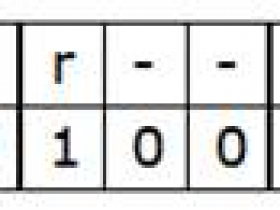- A+
所属分类:linux技术
▋****1. 管道的概念
管道,又名「无名管理」,或「匿名管道」,管道是一种非常基本,也是使用非常频繁的IPC方式。
1.1 管道本质
- 管道的本质也是一种文件,不过是伪文件,实际上是一块内核缓冲区,大小4K;
- 管道创建以后会产生两个文件描述符,一个是读端,另一个是写端;
- 管道里的数据只能从写端被写入,从读端被读出;
1.2 管道原理
管道是内核的一块缓冲区,更具体一些,是一个环形队列。数据从队列的一端写入数据,另一端读出,如下图示:

1.3 管道的优点
简单
1.4 管道的缺点
- 只能单向通信,如果需要双向通信则需要建立两个管道;
- 只能应用于具有血缘关系的进程,如父子进程;
- 缓冲区大小受限,通常为1页,即4k;
▋****2. 管道的创建
管道创建三步曲:
a. 父进程调用pipe函数创建管道;
b. 父进程调用fork函数创建子进程;
c. 父进程关闭fd[0],子进程关闭fd[1];
具体如下图所示:

▋****3. 管道的读写行为
a. 管道的缓冲区大小固定为4k,所以如果管道内数据已经写满,则无法再写入数据,进程的write调用将阻塞,直到有足够的空间再写入数据;
b. 管道的读动作比写动作要快,数据一旦被读走了,管道将释放相应的空间,以便后续数据的写入。当所有的数据都读完之后,进程的read()调用将阻塞,直到有数据再次写入。
▋****4. 例程
父子间通信:
1#include <stdio.h> 2#include <sys/types.h> 3#include <unistd.h> 4#include <string.h> 5 6int main() 7{ 8 int fd[2]; 9 pid_t pid; 10 char buf[1024]; 11 char *data = "hello world!"; 12 13 /* 创建管道 */ 14 if (pipe(fd) == -1) { 15 printf("ERROR: pipe create failed!n"); 16 return -1; 17 } 18 19 pid = fork(); 20 if (pid == 0) { 21 /* 子进程 */ 22 close(fd[1]); // 子进程读取数据,关闭写端 23 read(fd[0], buf, sizeof(buf)); // 从管道读数据 24 printf("child process read: %sn", buf); 25 close(fd[0]); 26 } else if (pid > 0) { 27 /* 父进程 */ 28 close(fd[0]); //父进程写数据,关闭读端 29 write(fd[1], data, strlen(data)); // 向管道写数据 30 printf("parent process write: %sn", data); 31 close(fd[1]); 32 } 33 34 return 0; 35} 兄弟间通信:
1#include <stdio.h> 2#include <sys/types.h> 3#include <unistd.h> 4#include <string.h> 5#include <sys/wait.h> 6 7int main () 8{ 9 int fd[2]; 10 int i = 0; 11 pid_t pid; 12 char buf[1024]; 13 char *data = "hello world!"; 14 15 /* 创建管道 */ 16 if (pipe(fd) == -1) { 17 printf("ERROR: pipe create failed!n"); 18 return -1; 19 } 20 21 for (i = 0; i < 2; i++) { 22 pid = fork(); 23 if (pid == -1) { 24 printf("ERROR: fork error!n"); 25 return -1; 26 } else if (pid == 0) { 27 break; 28 } 29 } 30 31 /* 通过i来判断创建的子进程及父进程 */ 32 if (i == 0) { 33 /* 第一个子进程,兄进程 */ 34 close(fd[0]); // 兄进程向弟进程写数据,关闭读端 35 write(fd[1], data, strlen(data)); 36 printf("elder brother send: %sn", data); 37 close(fd[1]); 38 } else if (i == 1) { 39 /* 第二个子进程,弟进程 */ 40 close(fd[1]); 41 read(fd[0], buf, sizeof(buf)); 42 printf("younger brother receive: %sn", buf); 43 close(fd[0]); 44 } else { 45 /* 父进程 */ 46 close(fd[0]); 47 close(fd[1]); 48 for (i = 0; i < 2; i++) { 49 wait(NULL); 50 } 51 } 52 53 return 0; 54} 更多精彩内容,请关注




